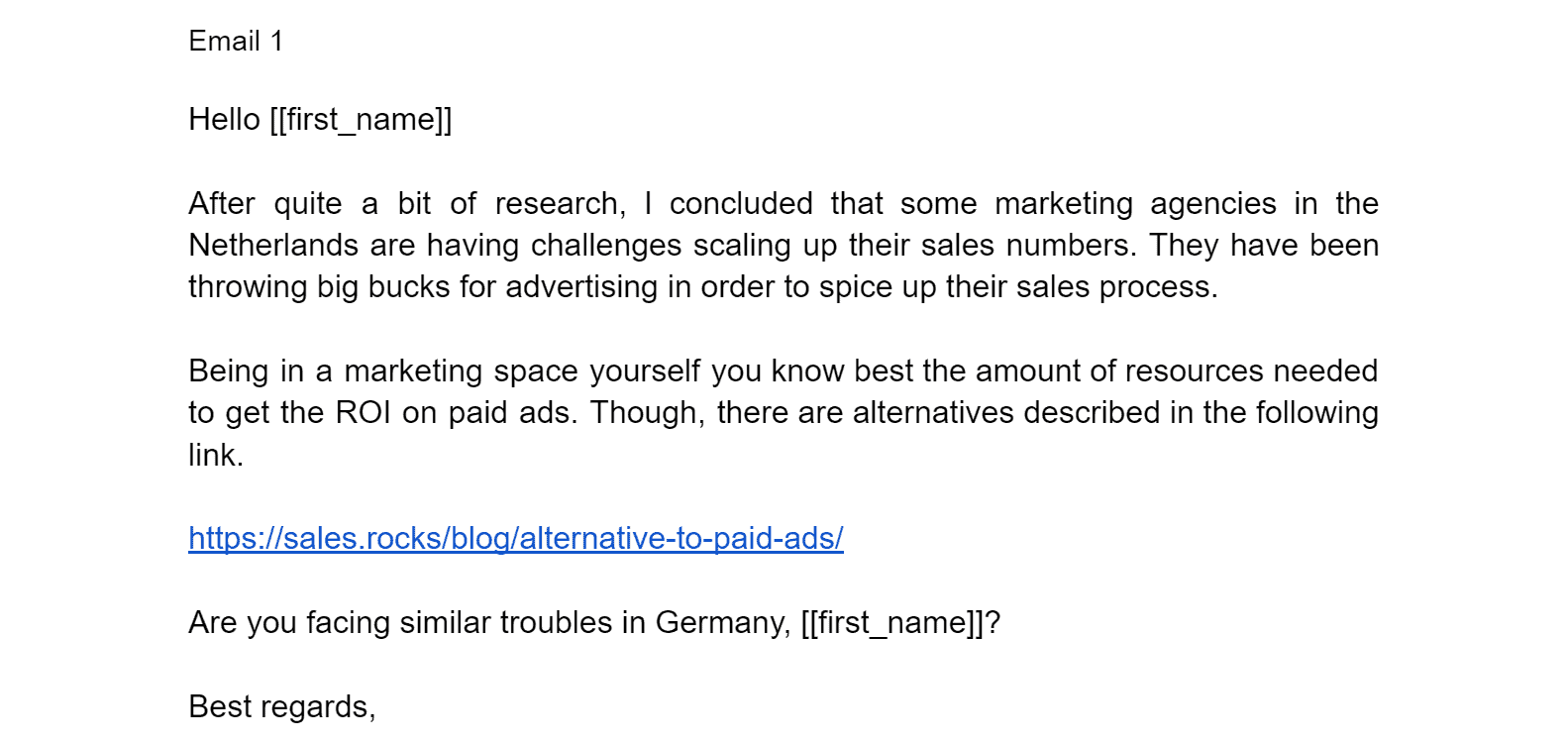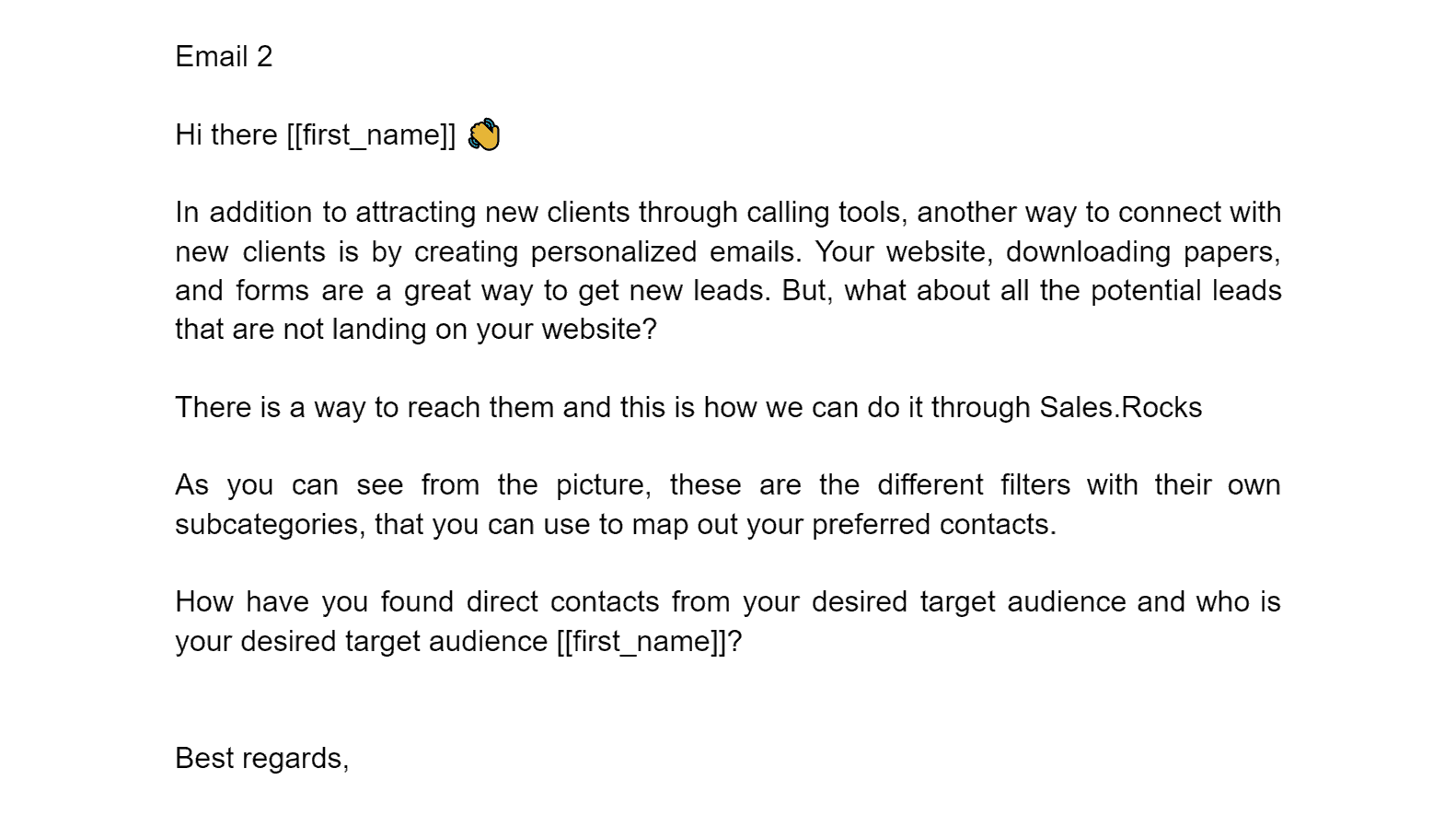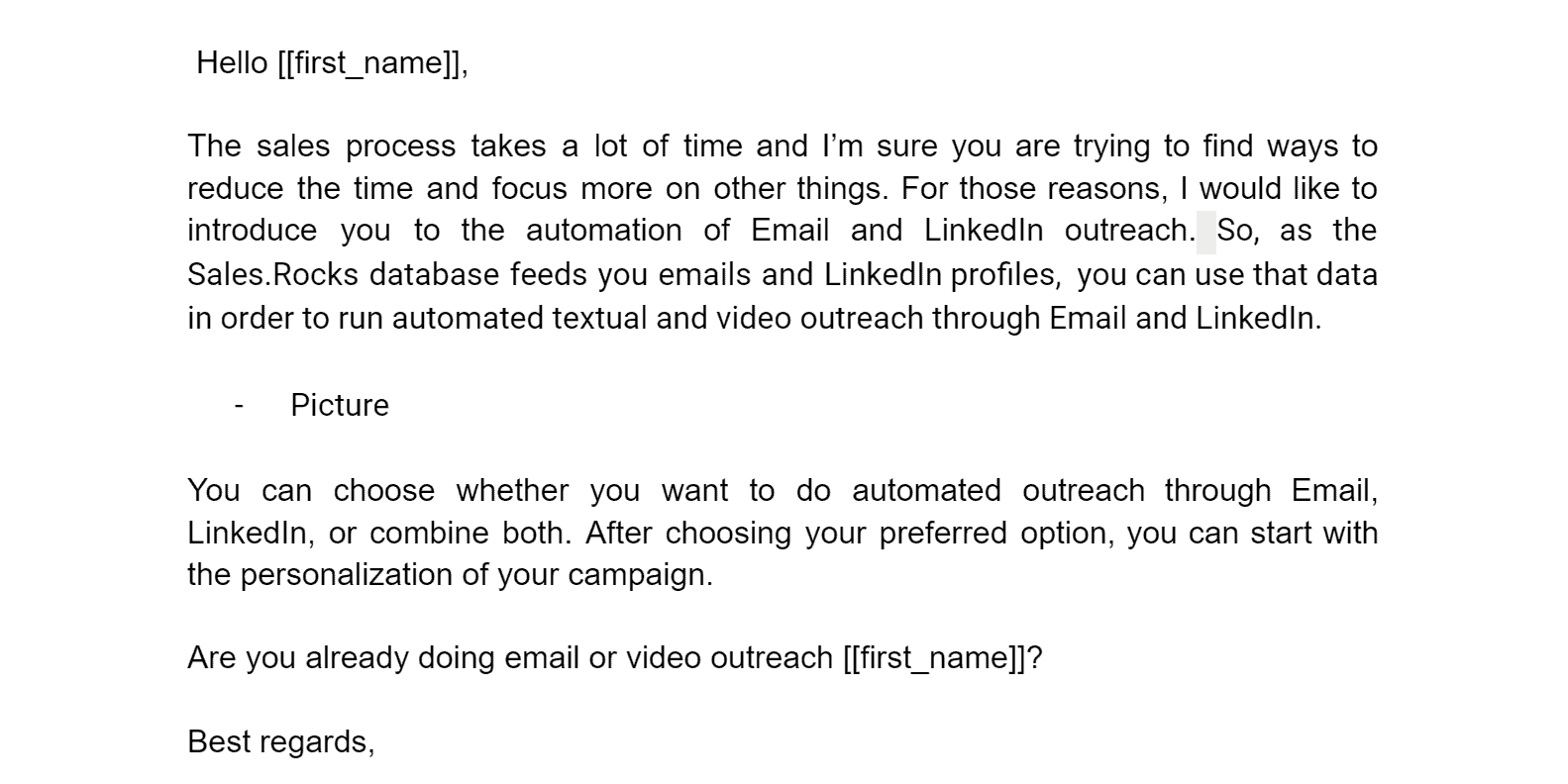Updated on April 28, 2023
Email campaigns have become one of the most popular and effective marketing tools today, whereas cold email campaigns have gained popularity with sales reps. Now imagine both teams “bombarding” with their content with a different twist, but the same goal, to convert leads into paying customers.
With millions of emails being sent out daily, businesses must ensure that their content stands out and engages their potential customers, especially for cold emails. Writing email content that will stand out can be a challenging task, but by following a few tricks and improvements each time, sales teams can create content that will capture their reader’s attention and prompts them to take action.
We want to examine one of our cold email sequences and tear it down into suggestions and improvements on how to write killer email content each time.
The 5 key elements of email content planning
The first key to writing killing email content is to understand your audience. It is crucial to make your content relevant and personalized to your readers. By segmenting your email lists, you can tailor your content to specific groups based on demographics, interests, the web technologies they use, and other data points. Most crucial is to understand the pain points and buying habits of your audience and craft content that resonates with them in each of your cold emails.
The second key to a killing email campaign is to create a compelling subject line. By compelling we don’t mean to use FOMO each time or give them a discount or “an offer they can’t resist”. A good subject line should be clear, concise, yet catchy. Avoid using spam words and trigger words that might send your email to the spam folder, and also do overdo your subject with emojis.
The third key is to keep your content simple, clear, and to the point. The attention span of people is relatively short, and you have limited time to grab their attention. Avoid using lengthy paragraphs and technical jargon that might confuse your readers. Use short sentences and highlight your main ideas. Make your content visually appealing by using images, graphics, and videos to break up blocks of text.
The fourth key is to include a call to action (CTA) in your email content. A call to action prompts your reader to take a specific action, such as visiting your blog, viewing a personalized video you’ve prepared, booking an appointment, or signing up for your service. A good CTA should be conspicuous, clear, and easy to follow.
Lastly, but very easily forgotten, always ensure your email content is browser and provider-friendly. It is essential to ensure that your content is easily accessible through different browsers and that your content will actually show up. Avoid using large images or fonts that might distort or not load at all and have clear line breaks in your paragraphs or between sentences.
Content examination of an SDR email campaign
Now, having the things you should include out of the picture, we need to address the most common mistakes and the things you should avoid.
The best way to do this is by taking an example content of an average-performing campaign to check what’s included, what’s missing, and what needs to go out.
Let’s take the first example and see if it contains the 5 email content key elements:

Directly from the opening line of the email, we can see that there is a pain point identification of the specific target group and stating exactly what could be causing the pain point.
The wording of the sentences is clear and the visual spacing contributes to good readability, and a direct CTA to visit a link with a specific content that could potentially solve the given pain point is added.
What’s most recognizable here is the way the link is inserted into the content, using the full URL instead of “bait words” like “click here” or “visit now”. Even the “read more” could be a potential alarm for a spam word for the email providers, so using this method of transparent link insertion has the most success rate.
In addition to the CTA, there is an element to encourage further communication and response from the prospect.
We can easily say, this email template has a high chance of an open and click.

The first follow-up email follows more “providing a solution” psychology. Although the opening part is covering the awareness stage of the buyer’s journey, our remark here is that the text is packed with some terminology that could be difficult for the prospect and they’ll have a hard time identifying themselves in that pain point group.
The second part, where the solution is introduced follows the flow of the email content perfectly, however, the question might be confusing as it consists of 2 questions.
Keep your questions short and direct, but avoid questions that can be answered with YES or NO.
Finally, let’s take this follow-up email template as our last example.

Straight from the opening sentence, we can see that a relation to the prior communication is missing. It’s jumping right onto a solution for a pain point that was concluded by the author, but not checked with the prospect themselves.
Although we can see that a visual representation of the solution is included in this email, which is in most cases the best way to catch the attention of the reader, the explanation of the solution to the assumed pain point is too complex.
In addition, the text is not visually split in the best way possible, in order to be readable and understandable for the prospects. A line break between the 2nd and 3rd sentences would be ideal for introducing the new thought, in this case, the solution to the pain point.
Last, by not least, there is a solid, straightforward question to stimulate further discussion on the topic, but not a direct CTA to take some action regarding the introduced solution, for example, a simple sign-up CTA or an invitation for a Demo appointment.
Overall, this email template follows the flow but doesn’t cover all of the key elements for converting email content.
Conclusion
In conclusion, writing killer email content is not rocket science, but it requires careful planning, creativity, and understanding of your audience.
It’s important to keep in mind the buyer’s journey when crafting email content, as well as the target audience and their pain points. The goal of your content should be to engage the reader, provide a solution and encourage them to take action.
By using the five key elements, and also following our improvement tips, businesses can create email campaigns that engage their readers and drive conversions.
Craft killer email content
with Sales.Rocks


